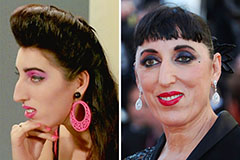Pop-under ads are a unique and sometimes annoying form of online advertising. Unlike traditional display ads that appear on web pages, pop-under ads open in a new window underneath the current browser window when a user clicks on a link or visits a website. These ads remain hidden until the user closes the main browser window, at which point they are brought to the foreground.{ Users may find pop-under ads intrusive and disruptive because they can suddenly appear without warning, taking up valuable screen space and interrupting their workflow.
- {However|Despite this|, some argue that pop-under ads can be an effective way for advertisers to reach their target audience. They are often targeted based on user behavior and interests, and they can remain visible even if the user switches tabs or windows.
- It's important for users to be aware of how pop-under ads work so that they can take steps to minimize their impact. This may include using ad blockers, adjusting browser settings, and being mindful of the links they click on.
Decoding Pop-Ups for Beginners
Pop-unders often get a bad rap. They appear when you click on something, but they open behind your current window. Some people think they're annoying or even dangerous, but they can be useful too!
- They can serve targeted ads based on what you've been looking at.
- They can also offer extra content or information related to the website you're visiting.
The key is to be aware of them and control their frequency. Most browsers let you restrict pop-unders, so you don't have to put up with them if they frustrate you.
Immerse into the World of Pop-Under Advertising
Pop-under advertising is a powerful marketing strategy that can effectively engage your target audience. This unique format involves displaying an advertisement in a new window below the main browser window, popping up when a user clicks on a link. It's a subtle way to present your message without disrupting the user's browsing experience.
- Benefits of pop-under advertising include its low cost, high reach, and ability to measure conversions.
- Moreover, pop-unders can be strategically redirected to specific groups based on their behavior.
How About Exactly a Pop-Under Ad?
A pop-under ad is a/appears as/functions as a type of online advertisement that/which/which often appears below the user's/browser's/current window. When you visit/browse/surf a website, a hidden/secret/sneaky pop-under ad might/could/may load/appear/show up in the background/shade/lower section. It only becomes visible/surfaces/pops into view when Popunder ads and ROI you close/minimize/exit the current window or tab. This means that/which/it can be a/often becomes/frequently is annoying/frustrating/a nuisance to users, as they might/could/may not realize/notice/see it initially. Pop-under ads are typically/usually/commonly used/employed/implemented to promote/advertise/display products, services, or other/various/diverse content.
Comprehending Pop-Under Ads: A Comprehensive Overview
Pop-under ads are a type of online advertising technique that appears beneath the current web page a user is viewing. Unlike pop-up ads, which rapidly appear on top of the webpage, pop-unders load in a separate window when the user navigates a particular link or completes a form. This makes them less intrusive than their pop-up counterparts and often generate in higher click-through rates. Although this, pop-unders have also been condemned for being intrusive and can sometimes detract the user experience.
- Let's are some key things to know about pop-under ads:
- These can be successful in driving traffic to websites.
- However, they can also be irritating for users if used overly
- It's important to implement pop-under ads carefully to prevent negative user experiences.
A Look at Pop-Under Ads
Pop-under ads, also known as those sneaky little windows that pop up behind your main browser window, can be a real pain. {They often appear|after you've finished browsing a website, or even just while scrolling through content. While some users find them annoying, advertisers love pop-unders because they tend to have more click-through rates than other ad formats.
- Here are some the pros and cons of pop-under ads:
- Pros:
- {High Click-Through Rates|Potential for Higher Engagement
- Cost-Effective
However, there are also some downsides to consider.For example, they can be intrusive and {interrupt{ your browsing experience. Many users find them distracting, and they can even lead to potential malware infections.
 Joseph Mazzello Then & Now!
Joseph Mazzello Then & Now! Charlie Korsmo Then & Now!
Charlie Korsmo Then & Now! Danica McKellar Then & Now!
Danica McKellar Then & Now! Susan Dey Then & Now!
Susan Dey Then & Now! Rossy de Palma Then & Now!
Rossy de Palma Then & Now!